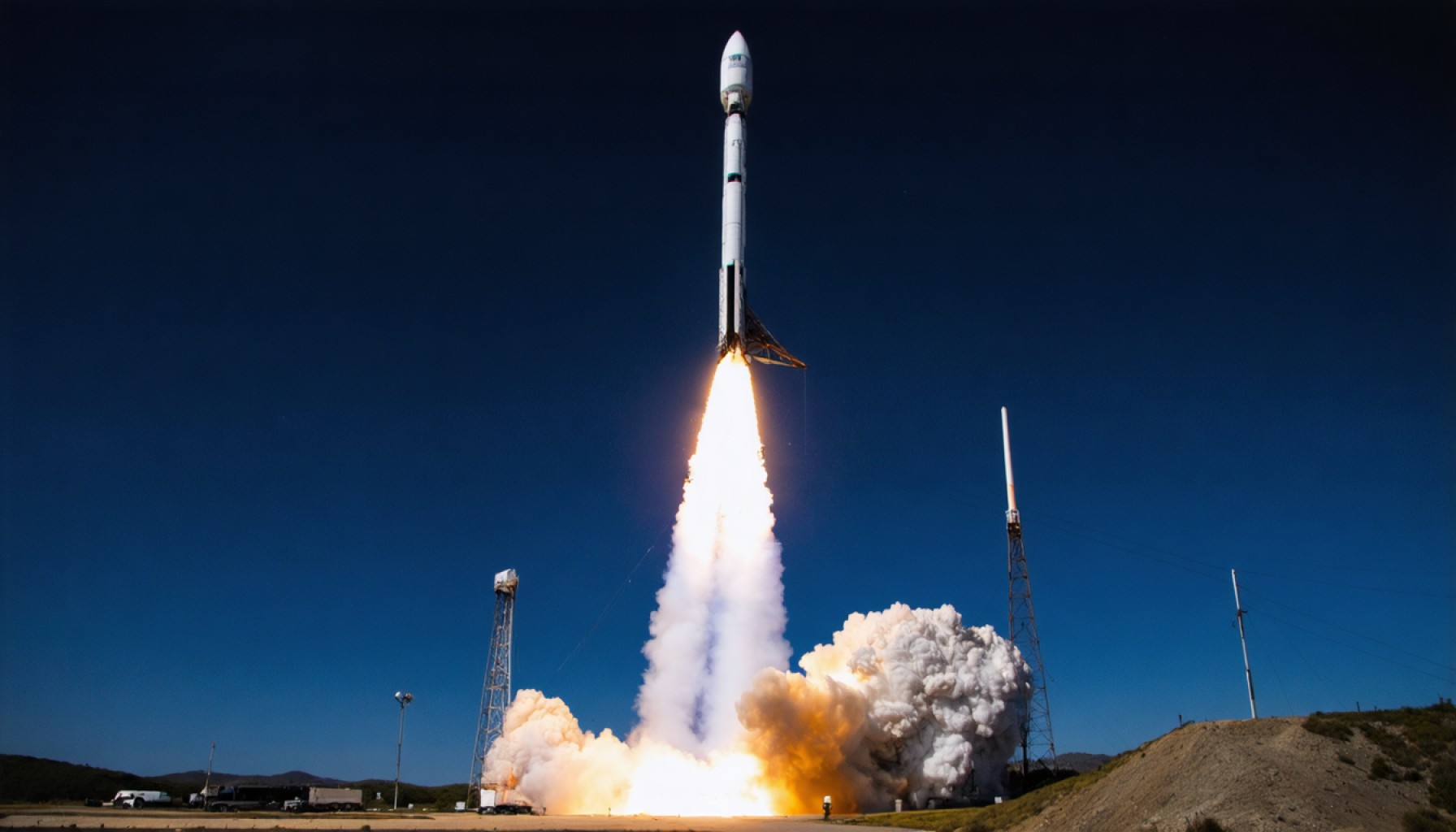- SpaceX’s Falcon 9 rocket is set for a significant launch from Cape Canaveral, deploying 28 Starlink satellites into low-Earth orbit.
- This mission highlights SpaceX’s goal of enhancing global broadband access, especially in underserved regions.
- The Falcon 9’s first stage booster, already on its 17th mission, aims for a return landing on the droneship “Just Read the Instructions” in the Atlantic Ocean.
- The launch is a crucial step in SpaceX’s plan to deploy thousands of Starlink satellites, creating a global internet network.
- Each satellite weighs 500 pounds and represents a future of widespread internet connectivity and innovation.
- This mission celebrates human ingenuity and the enduring quest to explore the cosmos, emphasizing the transformative impact of space exploration.
The skies above Florida are set to host yet another celestial dance as SpaceX readies its Falcon 9 rocket for a pivotal launch. With anticipation crackling through the air at Cape Canaveral Space Force Station, the scene is set for a remarkable spectacle at 6:15 p.m. Eastern Time this Sunday. The mission? Propelling 28 Starlink satellites into the vast expanse of low-Earth orbit.
This launch marks a milestone for SpaceX, exemplifying the company’s relentless pursuit of more accessible global broadband. The deployment of Starlink satellites aims to forge a network that could transform internet access, especially in underserved areas around the world. Each satellite is a beacon of connectivity, shrunk into a compact 500-pound package, with the potential to reshape the digital landscape.
The trusty Falcon 9, a world-renowned workhorse, takes center stage again. The rocket’s first stage booster holds a storied legacy, embarking on its 17th voyage, after previously facilitating missions of both innovation and exploration—spanning from European space missions to humanitarian resupply endeavors. In a feat of engineering prowess, this booster will attempt yet another awe-inspiring return to Earth, landing gracefully on the unmanned droneship aptly named Just Read the Instructions, stationed in the ever-patient Atlantic Ocean.
This landmark event unfolds against the backdrop of SpaceX’s ambitious vision to deploy thousands of Starlink satellites, sculpting an intricate tapestry of connectivity amongst the stars. As each satellite nestles into its orbital home, it symbolizes a step closer to an interconnected future, where the internet pervades every corner of the globe, breaking traditional boundaries and catalyzing innovation in communication.
For space enthusiasts and advocates worldwide, the mission serves as a testament to human ingenuity. It reinvigorates the pursuit of knowledge and the endless potential of exploring beyond our earthly abode. This launch is not just another addition to SpaceX’s impressive portfolio; it’s a reminder of the daring aspiration to reach beyond the sky—a dream that feels increasingly within our grasp.
So, as the countdown commences and engines roar to life, eyes from around the world will lift upwards, perhaps pondering the transformative impact hidden within these technical marvels racing to the stars.
SpaceX’s Falcon 9 Launch: Why It’s a Game-Changer for Global Connectivity
SpaceX’s Falcon 9 and Starlink: Enhancing Global Internet Access
The upcoming Falcon 9 launch from Cape Canaveral Space Force Station is more than just another rocket launch; it’s part of a transformative effort to make global internet access a reality. Here’s what you need to know about the mission and its implications:
Key Facts About the Mission
– Date and Time: The launch is scheduled for 6:15 p.m. Eastern Time on Sunday.
– Payload: The mission will deploy 28 Starlink satellites into low-Earth orbit.
– Rocket: Falcon 9, a reusable rocket known for its reliability and cost-effectiveness, will be used.
– Booster Legacy: The first stage booster is on its 17th mission, showcasing SpaceX’s focus on reusability and sustainability.
The Starlink Vision
Global Broadband Access: Starlink aims to provide high-speed internet to remote and underserved areas by deploying thousands of small satellites into low-Earth orbit. This network can help bridge the digital divide, offering opportunities for education, business, and healthcare worldwide. According to a report by Morgan Stanley, the satellite internet market could grow to a $400 billion industry by 2040, thanks in large part to ventures like Starlink.
Satellite Specifications: Each satellite weighs about 500 pounds and is designed to efficiently transmit data across vast distances. The compact design and advanced technology allow for significant global coverage enhancement.
Real-World Use Cases
– Education: Students in remote areas can access online courses and educational resources.
– Healthcare: Telemedicine can reach locations lacking traditional infrastructure.
– Emergency Services: Reliable internet can support disaster response efforts by enabling rapid communication and coordination.
Pros and Cons Overview
Pros:
– Increased Internet Coverage: Potential to provide internet where conventional methods fail.
– Cost-Effective: Reduces the need for expensive ground-based infrastructure.
– Scalable: Easily adjustable to increase coverage and capacity.
Cons:
– Space Debris: Increased satellite numbers could contribute to space debris, posing risks to other spacecraft.
– Astronomy Interference: The brightness of satellites can hinder astronomical observations, a concern among scientists and astronomers.
Market Forecast and Industry Trends
With investments in satellite internet growing, companies like SpaceX are leading a shift in telecommunication. The blend of reusable rocket technology and satellite internet paves the way for reduced costs and increased competition.
Predictions and Future Insights
The Starlink initiative could potentially challenge traditional internet service providers by offering comparable speeds and lower prices. Industry experts project continued disruption in both the aerospace and telecommunications sectors as technology evolves.
Quick Tips and Recommendations
1. For Consumers: Consider the benefits of satellite internet for reliable connectivity, especially in rural or underserved areas.
2. For Investors: Explore opportunities in companies investing in satellite technologies and broadband solutions.
3. For Policymakers: Address space debris concerns by encouraging the development of sustainable practices in satellite deployment and management.
For more information and updates on similar initiatives, check out SpaceX’s official website.
